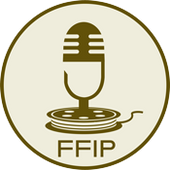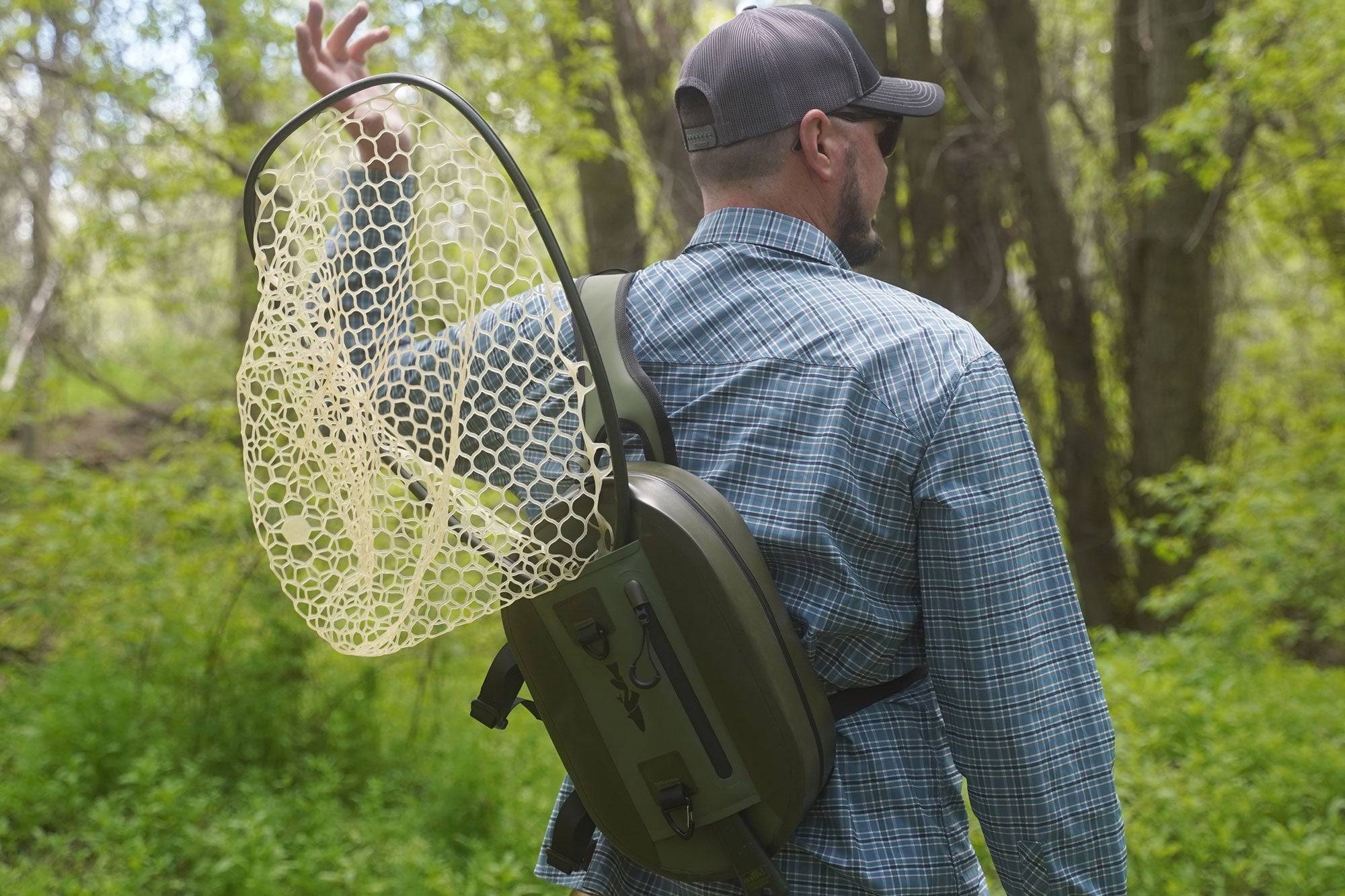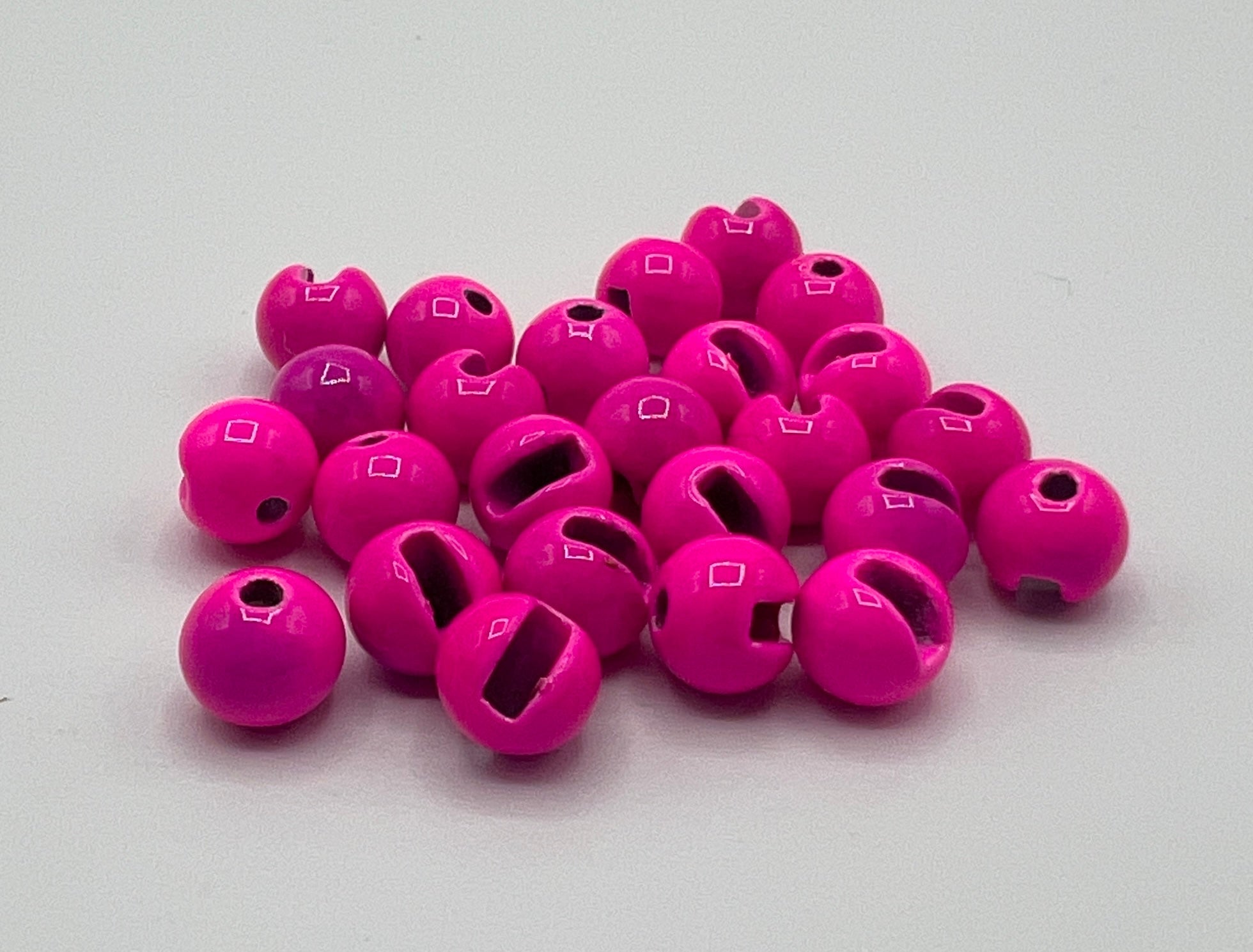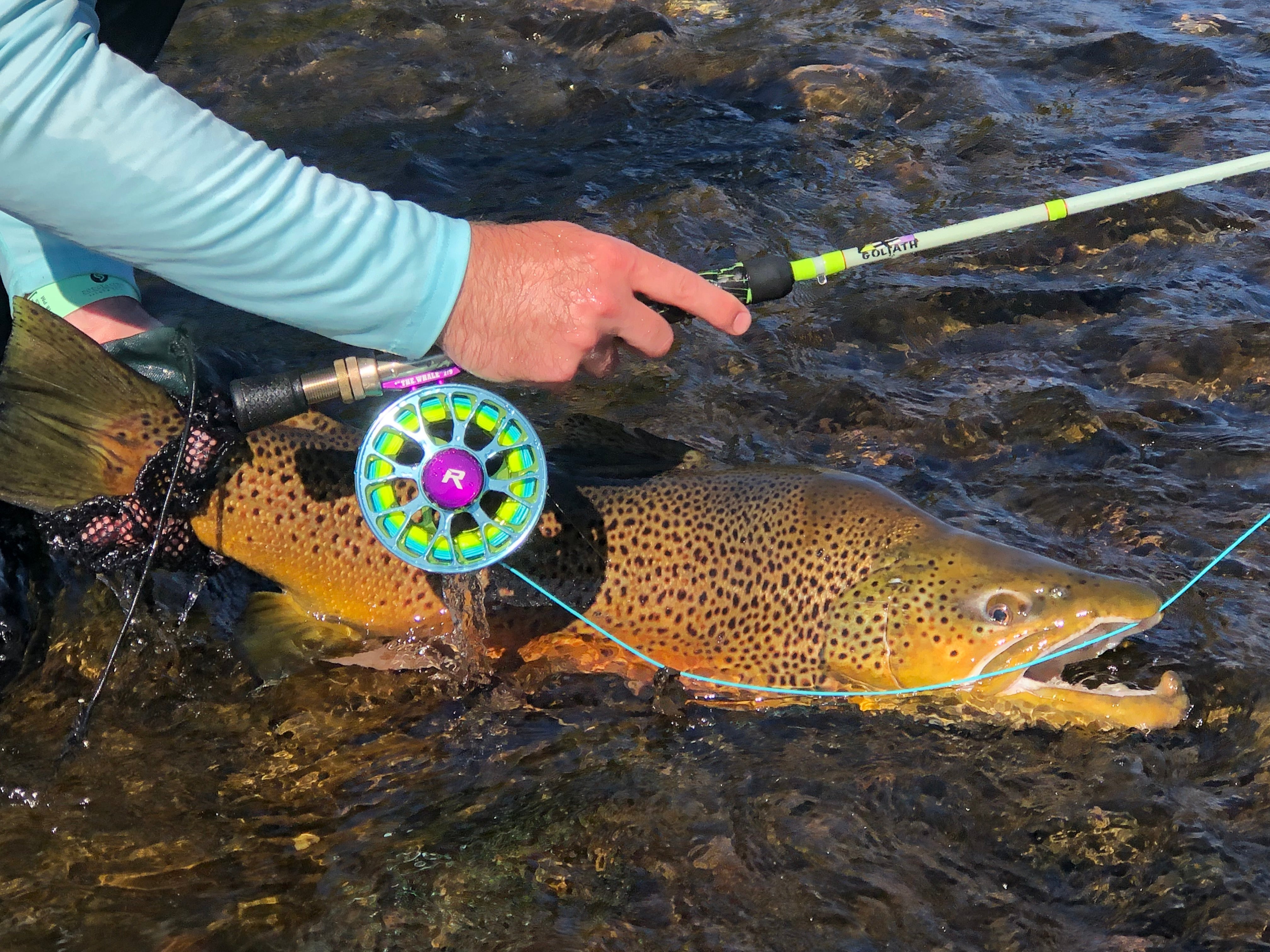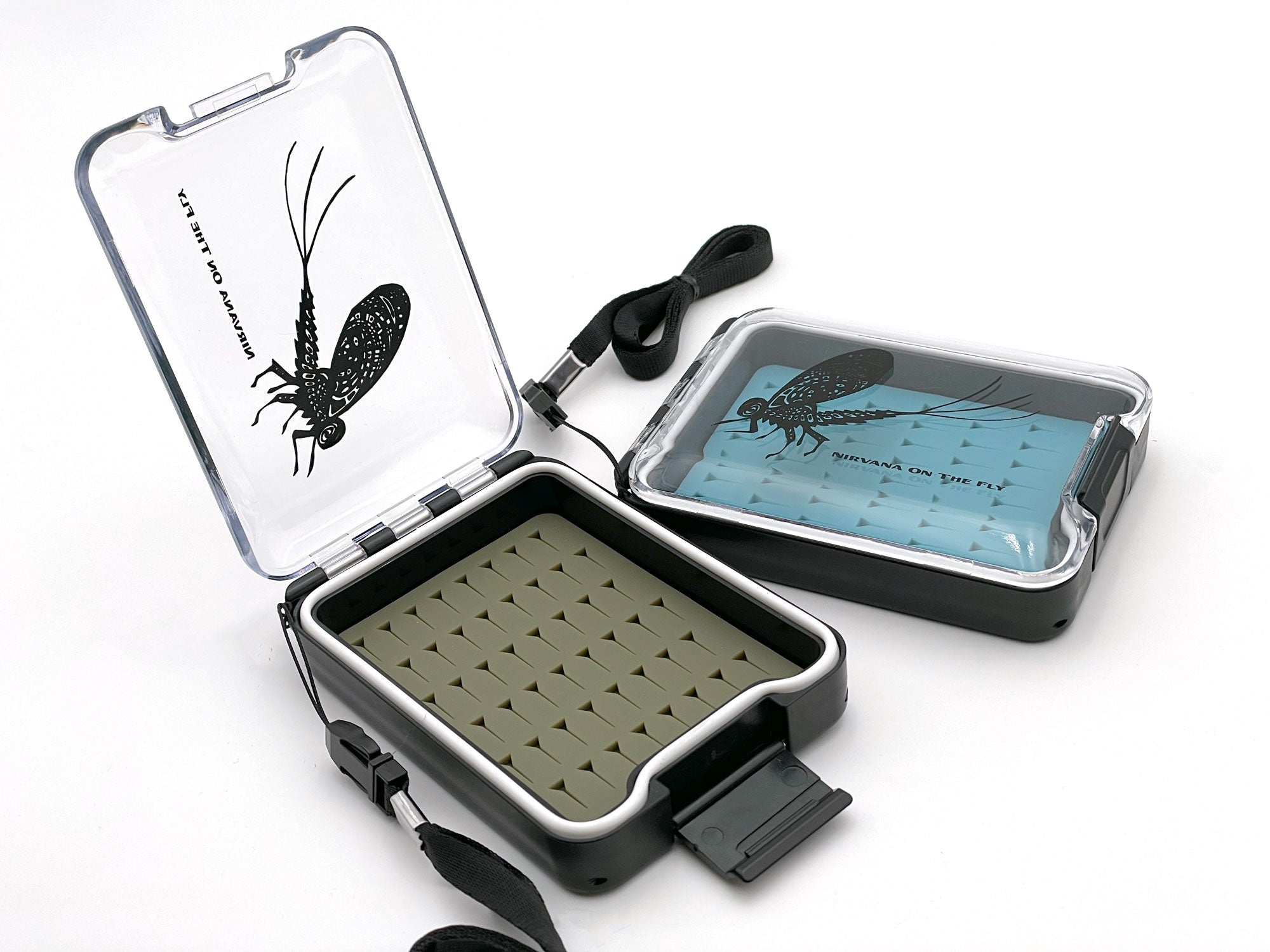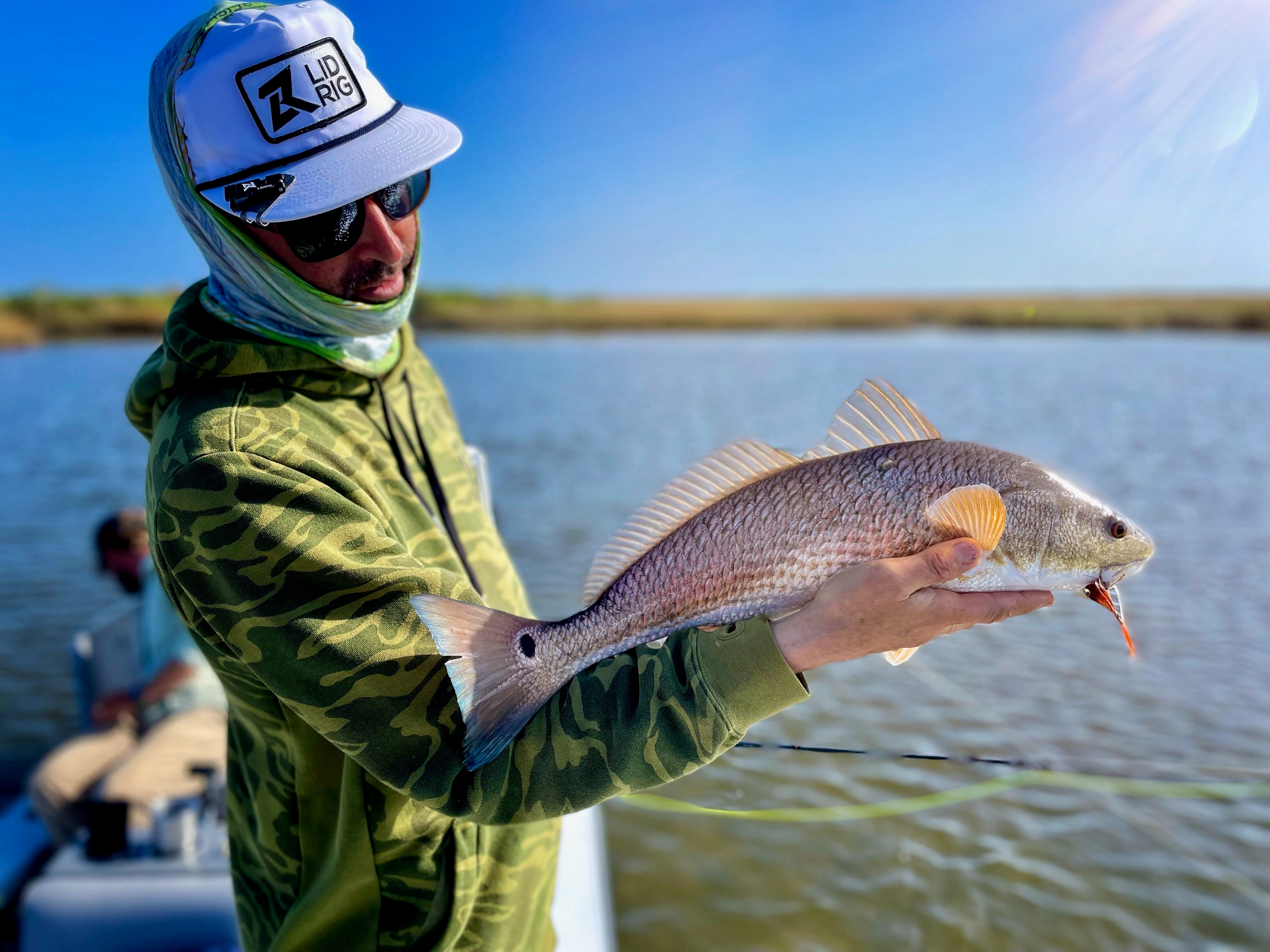Part 3 - Become a Better Angler | Fly Fishing Insider Podcast
If you haven't read Part 1 - Become a Better Angler | Fly Fishing Insider Podcast or Part 2 - Become a Better Angler | Fly Fishing Insider Podcast, I highly suggest reading those as well
Practice Knot Tying
Being proficient in tying various knots quickly and securely is vital. Different situations and rigs require different knots. Practice tying them until it becomes second nature.
Expanding on the tactic, "Practice Knot Tying," is essential in fly fishing. Knot tying is a fundamental skill that connects you to the fish. A well-tied knot can be the difference between landing a big fish and watching it swim away. My three critical criteria are; the right not for the right situation, wetting the knot before drawing it tight, and ensuring that the knot is tight by testing it. Here’s a deeper dive into this crucial aspect:
Importance of Knot Tying
Strength and Reliability: Properly tied knots ensure that your line, leader, tippet, and fly stay connected under tension. Understanding the knot and its intended uses is an important step. Knots believe it or not have a strength test that can be applied so study and understand a few.
Efficiency: Being able to tie knots quickly and correctly allows you to spend more time fishing and less time rigging your gear. When you are fumbling around trying to tie knots it is a frustration and a time suck. Buy a cheap spool of 15-pound monofilament from Amazon then sit at home during the football game and practice your knots. Practice with your eyes on the game so you know how to tie blindfolded.
This spool of Berkley is 1175 yards long and is in Blaze Orange. I like the bright color because I can see it if I drop a piece and clean it up easily. It also combines well with other colors if I want more detail in tying two line types together.
Common Fly Fishing Knots
Clinch Knot: A basic knot for attaching a fly to a tippet or leader.
Blood Knot: Used to join two pieces of fishing line together, particularly useful for building or repairing leaders.
Surgeon’s Knot: Another knot for joining two lines, easier to tie than a blood knot but slightly less streamlined.
Loop Knots (e.g., Perfection Loop): Create a loop at the end of the line or leader, allowing for more natural movement of the fly.
Here is a simple loop knot that I love for Trout!
Practice Techniques
Regular Practice: Dedicate time to practice knot tying at home. Use different types of lines and under various conditions (e.g., wet hands, low light). Again use the heavy line to start that I mentioned above then perfect the skill with other line types and conditions.
Use Realistic Materials: Practice with the same line and leader materials you use while fishing to get a feel for how they handle.
Knot Tying Tools: Some anglers find tools helpful, especially when dealing with smaller tippets and flies. I use a hemostat for several tricks. Here is a great tip for the fastest clinch knot.
Situational Knot Tying
Knots for Different Situations: Learn which knots work best for different fishing scenarios (e.g., fly line angles, attachment types, line types, and line sizes).
Knot Strength vs. Knot Size: Some knots are stronger, while others are more streamlined. Choose based on the fishing situation. Let’s use the example of the Davy knot. That knot is extremely low profile, strong and fast.
Want to learn a trick for tying off the bend in a hurry?
Troubleshooting Common Issues
Avoiding Weak Spots: Ensure the knot is properly wet, then seated, and tightened to avoid weak points.
Line Damage: Be careful not to damage the line while tightening the knot. Lubricate knots with water or saliva to reduce friction. This is something I see all the time. The lubrication will help avoid line burning. When a dry line is seated the heat generated is far more than you imagine and can actually cause significant damage to the line as it will change temperate of the filament and damage the strength at an already weakened position. This one thing becoming a habit will drastically improve your knot strength.
Learning Resources
Books and Guides: There are many detailed guides and books dedicated to fishing knots.
Online Tutorials: Utilize online resources, including videos, which can be particularly helpful in showing the knot-tying process. Beware of misinformation in when to use things so do a bit of due diligence. There is also a realm of what I like and can do quickly vs. strength. There are advantages and disadvantages to both.
Field Practice
In-Field Adjustments: Practice tying knots in the field, as conditions on the water are different from those at home.
Experimentation: Don’t be afraid to try new knots you’ve learned to see how they perform in real fishing situations. This is especially fun when learning new rigging techniques. Ask friends, and parking lot acquaintances about how they rig. Be upfront that you want to learn and experiment.
Teaching and Sharing
Share Knowledge: Teach knots to fellow anglers, especially beginners. Teaching is a great way to solidify your own understanding. Watch the details of their tying and provide good solid feedback. Often becoming a teacher will help you improve your own skillset.
Advanced Knots and Rigs
Specialized Knots: As you progress, learn more advanced knots that may be specific to certain types of fly fishing, like saltwater or spey fishing. This is especially important important in saltwater where you combine different line materials and line sizes that are significantly different in line diameter or weight strength. The wrong knot here against a big, hard pulling fish, can easily cost you a trophy catch.
Rigging Techniques: Understanding how to properly rig your entire setup, including the right knots for droppers, tandem flies, or sink-tip lines, is also important. This to me is a scenario of you don’t know what you don’t know so looking around, asking other is a great step. Want to learn a ton about rigging techniques then start watching conventional anglers. The methods they use can be adopted and used in fly fishing and they are absolute masters at trying new and different techniques.
Practicing and mastering various knots is a fundamental aspect of fly fishing that enhances both the practical and experiential elements of the sport. Well-tied knots lead to more effective and enjoyable fishing, reducing gear failure and increasing success in landing fish.
Learn Stream and Lake Ecology
Becoming a better angler means understanding the ecosystem they are fishing in. This includes knowledge about the types of insects present, how weather and seasons affect the water and fish behavior, and the impact of human activities on the environment.
Become a better angler by expanding on your ability to "Learn Stream and Lake Ecology." Taking this step to understand is crucial for becoming more skilled and environmentally conscious on your way to become a better angler in fly fishing. This involves understanding the ecosystems where you fish, which directly affects fish behavior, their food sources, and ultimately, your fishing strategies.
Understanding Aquatic Ecosystems
Types of Water Bodies: Differentiating between streams, rivers, lakes, and ponds, as each has unique characteristics and ecosystems. Furthermore each system has multiple types so knowing all the different scenarios of the situation you are walking into as a target is important to your success.
Water Quality: Understanding factors that affect water quality, like pH, temperature, and oxygen levels, which directly influence fish health and behavior. Think of yourself. What are the optimal conditions for you? Do you want to sit in a hot room and eat? Would you like to be in a polluted environment and hang out or would you prefer to move to a new location? Fish are no different in that nature.
Insect Life and Hatch Patterns
Entomology for Anglers: Familiarize yourself with the life cycles of common aquatic insects like mayflies, caddisflies, and stoneflies. Knowing what insects are hatching can guide your fly selection.
Hatch Patterns: Learn to recognize and anticipate hatch patterns times when certain insects are abundant, which is when fish are likely to feed actively.
Read this article on insect hatches.
Plant Life
Aquatic Vegetation: Identifying different types of aquatic plants can help in understanding fish habitat preferences. Vegetation can provide food, oxygen, and shelter for fish. Vegetation can be a staging ground for insects as well and allow you to identify certain feeding habitats.
Riparian Vegetation: The plant life along the banks (riparian areas) also plays a crucial role in the health of aquatic ecosystems by providing shade, stabilizing banks, and contributing organic matter. Think of Salmon Flies and how they crowd the riparian vegitation during the hatch.
Fish Species and Their Habitats
Species-Specific Habitats: Different fish species prefer different environments. Trout, for instance, often thrive in cold, oxygen-rich streams, while bass may prefer warmer, vegetated waters. Toss a few streamers into water lillys and see how bass react.
Spawning Areas: Knowing where and when fish spawn can help in understanding their seasonal movements and distribution. Think of migratory fish and spawning behaviors for saltwater fish or fish runs in Alaska. If you don’t understand or know these cycles you can often be on location and in the right location but the timing is off and you are out of luck.
Food Webs
Primary Producers: Understanding the role of algae and other aquatic plants as primary producers in the aquatic food web. These agies and mocroinvertibetes are low on the food chain but support the smaller baitfish which support the fish we often target.
Predator-Prey Relationships: Recognize the interactions between different species, including what your target fish species eat and what preys on them.
Impact of Human Activities
Pollution and Ecosystem Health: Be aware of how agricultural runoff, industrial pollution, and urban development affect water bodies and their inhabitants. I fish urban waters for Carp and sometimes you can quickly decipher that it is polluted and not worth the effort.
Conservation Efforts: Understand local conservation efforts and regulations, which are often designed to protect and restore aquatic ecosystems. Trout Unlimited and the Bonefish Tarpon Trust are great examples of this effort.
Natural and Anthropogenic Changes
Seasonal Changes: Recognizing how seasonal changes (like water levels, temperature variations) affect aquatic life and fish behavior. Reading a book like Seasons for Trout by Hafel, Hughes and Morris is a favorite for me. I re-read it every so often just to remind myself of all the dynamic changes that occur.
Human Impacts: Understanding the impact of human-made changes like damming, channelization, and water extraction on aquatic ecosystems. I always think of Idaho in this scenario. I can recall the first time I went out with a local friend and he never took me to the river. Instead we fished all the seasonal farming water troughs and caught a ton of fish.
Observation and Continuous Learning
Regular Observation: Spend time observing the water body, noting changes in water clarity, current, and other environmental factors. Wind factors, sun factors, bug life, etc. Environmentally, what is changing that could be a regular or a acute change to the ecological environment?
Learning Resources: Utilize books, scientific articles, and online resources focused on aquatic ecology and its relation to fly fishing. I’ll point it out again, but the public library can be invaluable here. Audiobooks, podcasts ,online articles that are ecological angles vs fishing angles can teach you a ton and make you extremely versatile.
Engaging with the Environment
Participate in Conservation: Engage in local conservation efforts or citizen science projects to help preserve aquatic ecosystems. This is where volunteer work can be a blast. Go out with your local BLM and do a fish count day or restoration project. It is amazing what you can learn during a day on the water or trail with a professional in their space. I can recall doing a fish shocking project and seeing 20” fish come out of a small stream that was near me. I never even thought that fish of size like that existed in the stream. Now it is one of my prime streamer creeks.
Responsible Fishing Practices: Practice catch and release, where appropriate, and adhere to local fishing regulations to support sustainable fishing. This is a common go to and I agree with it but pay attention to what local fish and wildlife experts are suggesting. It is a judgement situation so use your knowledge to make your own judgement and decision. For example, one of my local waters is over populated in brown trout so local experts are actually suggesting that you catch and keep here and there to help with the over population and stunting of growth.
Understanding stream and lake ecology is about connecting with the environment in which you fish. It enriches the fishing experience by providing a deeper appreciation of the natural world and its complexities. This knowledge not only makes you a better angler but also a steward of the waterways and their inhabitants. Share what you learn and become a teacher. In my opinion teaching others can be one of the most gratifying and effective ways to aid conservation, preservation and the overall enjoyment of becoming a better fly fishing angler.
Remember, fly fishing is as much about enjoying the outdoors and the experience as it is about catching fish. Patience, practice, and continuous learning are key to improving your skills.

By Christian Bacasa
Host of the Fly Fishing Insider Podcast
www.ffipodcast.com
@flyfishinginsiderpodcast
@dupeafish
